Anti-aircraft missile systems based on air-to-air guided missiles with a thermal guidance system
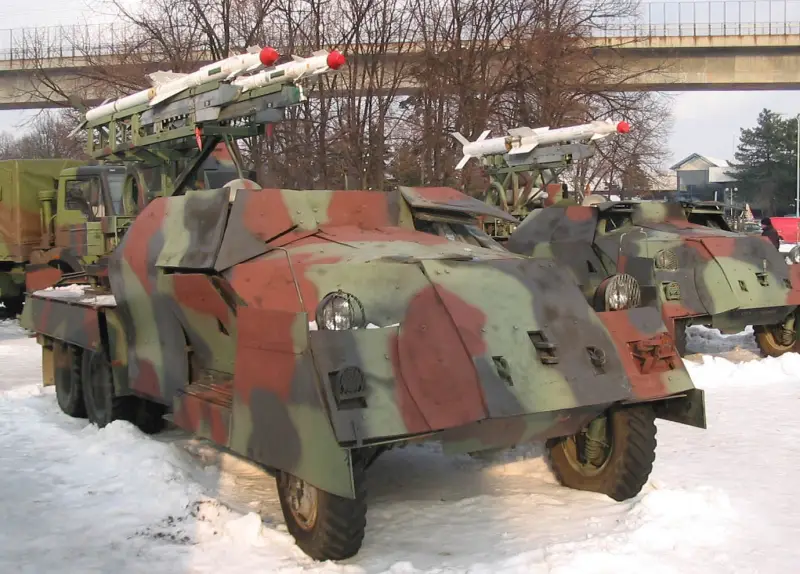
In two previous publications dedicated to the Ukrainian surrogate air defense systems, known as FrankenSAM, the prospects for using American air-to-air missiles AIM-9 Sidewinder and AIM-7 Sparrow in ground air defense systems were considered.
application practice aviation missiles in ground-based air defense systems has a long history history, and today we will look at other ground-based air defense systems created on the basis of an air defense system with a thermal guidance system.
All modern close-in air combat missiles (for example, the domestic R-73 or the American AIM-9X Sidewinder) use homing to the target’s thermal signature. The heat sources in this case are the exhaust of hot gases from the engine and parts of the fuselage of the aircraft, which heat up during flight in dense layers of the atmosphere. And the greater the temperature difference between the environment and the aircraft, the more contrasting the target is in the infrared optical range.
In order to increase noise immunity, since the 1980s, highly sensitive cooled homing heads with infrared and ultraviolet channels have been used, which, in combination with a processor that provides selection based on trajectory characteristics, makes it possible with a high degree of probability to avoid failure of target acquisition when shooting thermal traps.
In addition, a photocontrast optical guidance channel can be additionally used, highlighting the target against the sky. Missiles with a combined IR/UV/FC seeker, as a rule, have a relatively short firing range and are capable of hitting intensively maneuvering aircraft in the line-of-sight zone.
However, such a seeker can also be installed on longer-range missiles (for example, on the Soviet R-27T), which, before the target is captured by a thermal homing head, are controlled by an inertial system that leads them to the target area, or adjust the flight based on signals received from the aircraft - carrier.
The very first air defense system that used modified aircraft missiles with TGS was the American MIM-72 Chaparral (more details here). Subsequently, taking into account the high prevalence of close-in air combat missiles equipped with an infrared seeker, attempts were made in different countries to create mobile close-range air defense systems.
Yugoslav air defense systems with R-3S, R-60 and R-73 missiles
Thus, in Yugoslavia in the late 1980s and early 1990s, military air defense systems were developed that used Soviet R-3S (K-13), R-60 and R-73 missiles. This was due to the fact that the Yugoslav army did not have the Strela-1, Strela-10 and Osa-AK/AKM complexes.
The first was an air defense system on a TAM-150 truck chassis with two guides for R-3S (K-13) missiles, demonstrated in 1993.
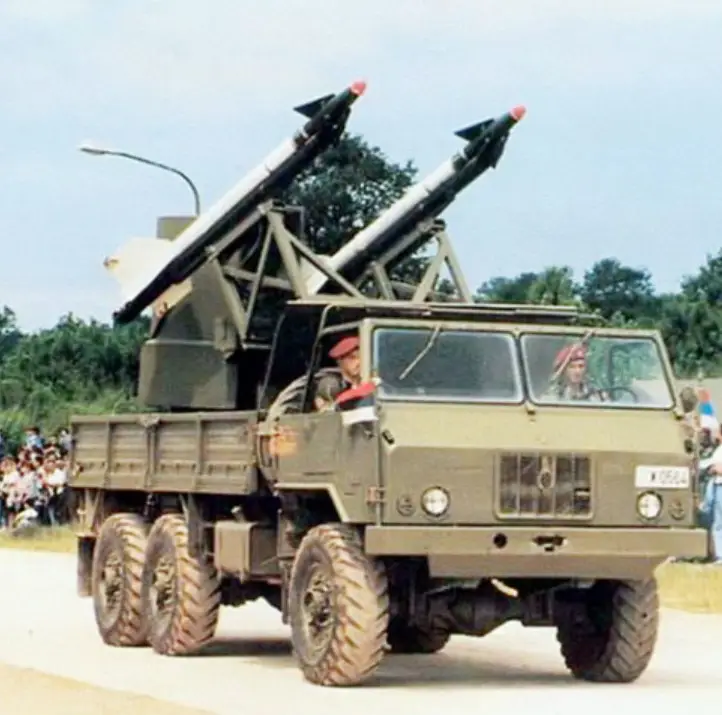
By that time, the R-3S UR (Soviet copy of the AIM-9 Sidewinder), adopted for service in the early 1960s, was outdated. Apparently, this was an experimental sample designed to confirm the viability of the concept.
Soon a prototype of the Pracka (“Sling”) air defense system appeared, which was a towed launcher with R-60 missiles mounted on a carriage of a built 20-mm Zastava M55 anti-aircraft artillery mount.
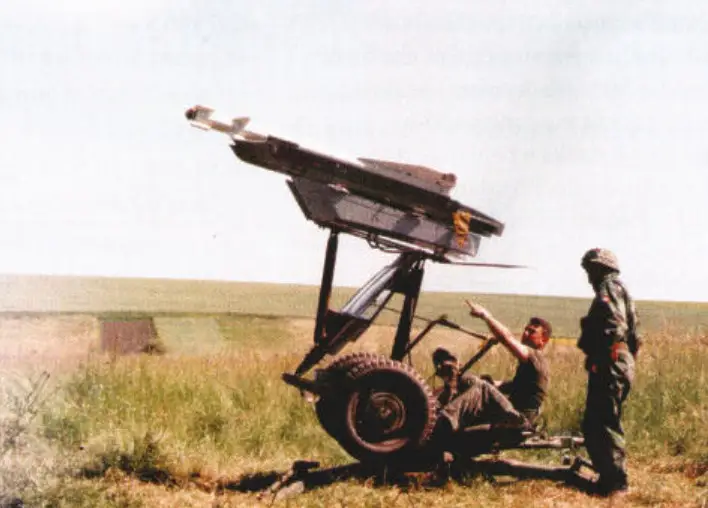
The Soviet-made R-60MK missiles used as part of the Pracka air defense system were equipped with additional upper stages. However, this did not help much, and the effectiveness of the towed launcher did not exceed the much lighter and more compact Strela-2M MANPADS.
In order to improve mobility and the ability to accompany on the march tank and motorized rifle units, specialists from the Belgrade Military-Technical Institute and the JNA Air Force Test Center created the RL-2 self-propelled complex, for which a launcher with two modified R-60MK missiles was installed on the chassis of a twin 30-mm Czechoslovak Praga PLDvK VZ self-propelled gun. 53/59.
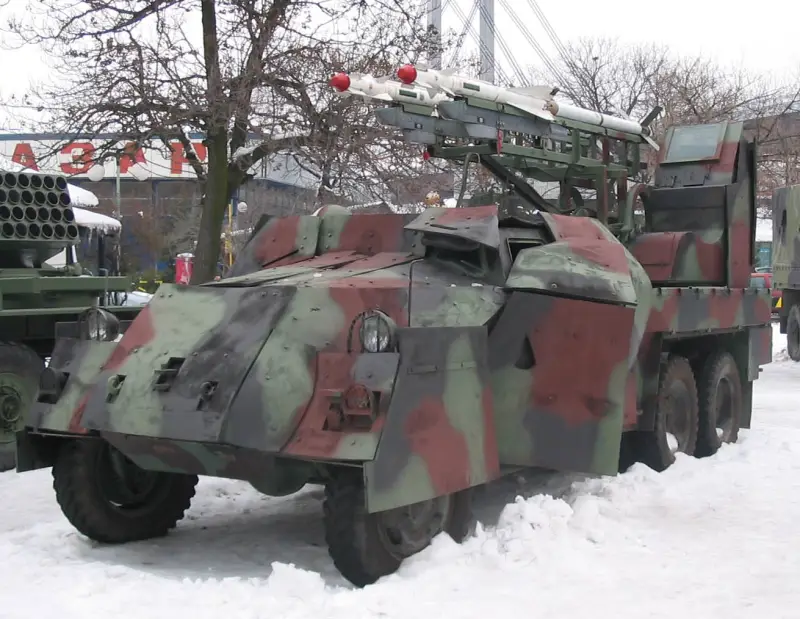
The self-propelled air defense missile launcher retained the gunner's workstation protected by armor from the self-propelled gunner. The anti-aircraft missile, created on the basis of the R-60MK air-to-air missile, received a first upper stage with a diameter of 120 mm with two cross-shaped stabilizers.
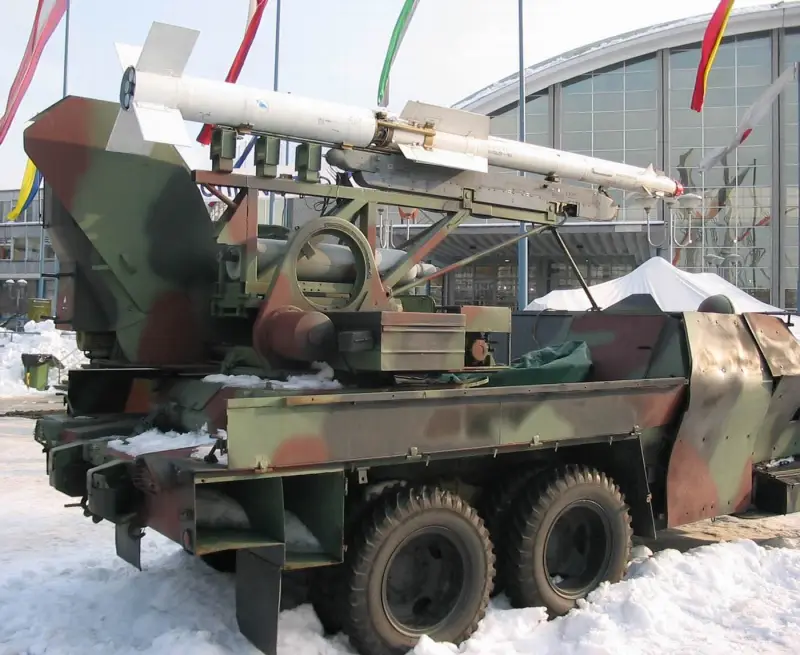
The guides were based on aircraft launchers of the APU-60-1DB1 type, dismantled from the MiG-21bis fighter.
A further development of the RL-2 was the RL-4 air defense system, armed with missiles based on the R-73 missile, which were supplied with the MiG-29 fighters.
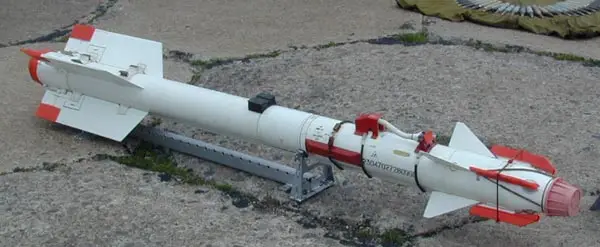
Air-to-air missile R-73
The R-73 aircraft missile, modified for use as a missile defense system, also received an additional booster, designed on the basis of six VRZ-57 rockets assembled in one package (a local copy of the S-5).
The characteristics of the RL-2 and RL-4 air defense systems were not disclosed. According to expert estimates, the firing range of the RL-2 against non-maneuvering targets could reach 8 km, and the RL-4 – 12 km. However, the combat value of these complexes was largely devalued by the lack of equipment necessary to receive data from the air defense command post, and target designation was only possible by voice over a VHF radio station. The gunner-operator searched, identified and captured targets visually.
Although the R-73 missile, equipped with an additional upper stage, had good prospects for use as part of an anti-aircraft complex, a weak research and development base and the lack of developments in the field of compact and effective optoelectronic and radar systems did not allow Yugoslav developers to create a truly effective short-range air defense system.
Yugoslav representatives stated that locally produced mobile anti-aircraft systems were successfully used against air attack weapons in 1999 during NATO's aggression against Yugoslavia. However, there is no objective evidence to support such statements.
Modernization of Cuban air defense systems "Strela-1M"
In the 1970s–1980s, to protect army units from air attacks, the Cuban armed forces received 60 Strela-1M and 42 Strela-10M short-range air defense systems. To date, the 9M31M missiles with the GSN FC, which were part of the ammunition load of the Strela-1 air defense system on the chassis of the BRDM-2 wheeled armored vehicle, are hopelessly outdated and, most likely, not operational.
About 10 years ago, a report was released on Cuban television in which the combat vehicle of the Strela-1M air defense system was demonstrated, equipped with R-3S (K-13) air combat missiles, which were previously part of the armament of MiG-17 and MiG-21 fighters and MiG-23.
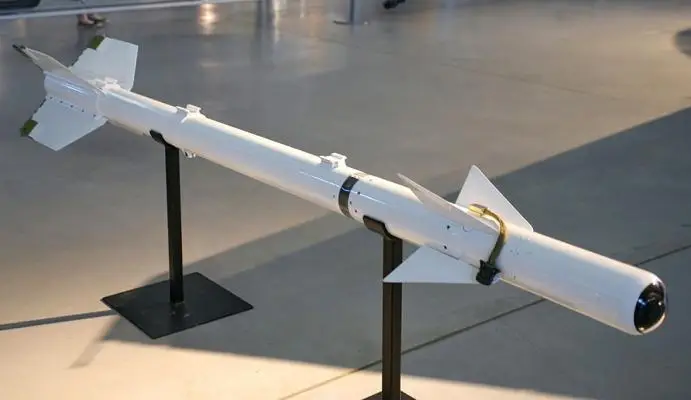
R-3S air-to-air missile
The R-3S missile's characteristics roughly corresponded to the early modifications of the American Sidewinder. With a launch weight of just over 75 kg, the maximum firing range reached 7,5 km, the flight speed of the target being fired was up to 1 km/h.
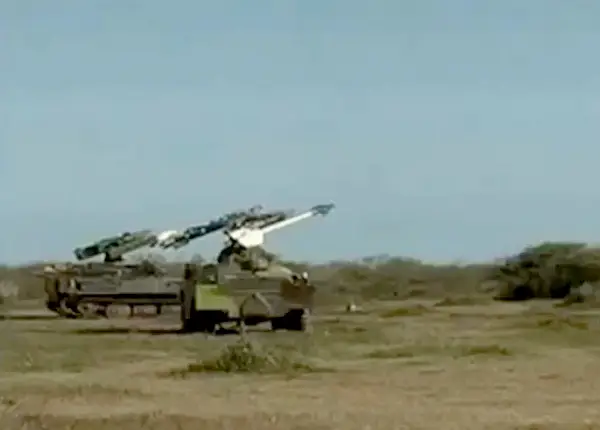
Apparently, the Cubans decided to use on mobile air defense systems removed from the main carriers of air-to-air missiles, which have undergone modifications and refurbishment. At the same time, taking into account the characteristics of the R-3S missile, the sensitivity and noise immunity of its IR seeker, it can be assumed that, when launched from a ground-based launcher, it is unlikely to surpass the 9M37M missile defense system from the Strela-10M air defense system.
Israeli Spyder-SR air defense system
In the mid-1990s, a consortium of Israeli companies Rafael Armament Development Authority and Israel Aircraft Industries began creating an anti-aircraft missile system, which now uses Rafael Python-5 close-in air combat missiles.
The Python-5 missile launcher is a variant of the evolutionary development of the Python-4, the predecessor of which was the Python-3 missile, which in turn traces its lineage to the Shafrir-1 missile launcher. The Shafrir-1 missile, adopted by the Israeli Air Force in December 1965, was created with an eye on the American AIM-9 Sidewinder missile.
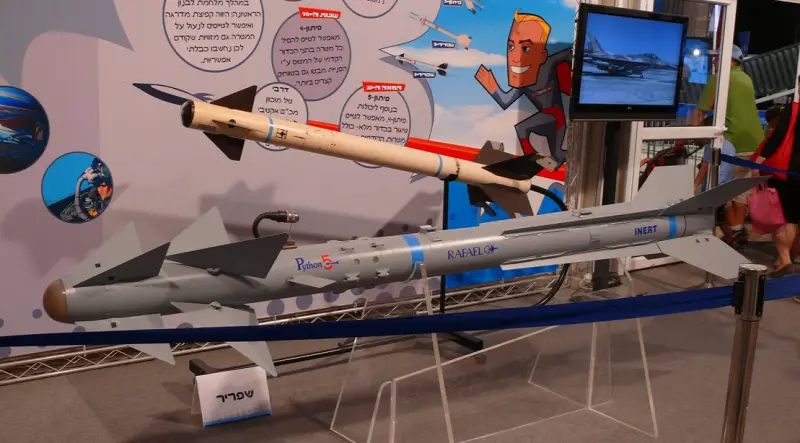
In the foreground is a Python-5 rocket, in the background is a Shafrir-1
The Python-5 rocket was first demonstrated at the Paris Air Show in Le Bourget in 2003.
According to information published by the development company, the Python-5 SD has a dual-band thermal imaging homing head operating in the optical and IR (8–13 μm) ranges, made in the form of a multi-element matrix located at the focal point of the lens, and a digital autopilot. The combination of electro-optical and thermal imaging guidance, coupled with a high-resolution matrix, makes it possible to successfully select and track subtle targets until they are destroyed.
It is stated that the Python-5 rocket has “outstanding” maneuverability, but specific data on thrust capabilities, available overloads, speed and maneuver parameters are not published.
Open sources say that the launch weight of Python-5 is 103 kg, the length of the rocket is 3,1 m, the diameter is 160 mm, and the wingspan is 640 mm. The angle of deviation of the coordinator from the longitudinal axis is up to 110°. Flight speed is up to 4 M. Firing range when launched from a fighter is up to 20 km. The mass of the warhead is 11 kg.
In 2005, the first version of the anti-aircraft system, known as the Spyder-SR (Short Range), which initially used the Python-4 missile, was presented at Le Bourget.
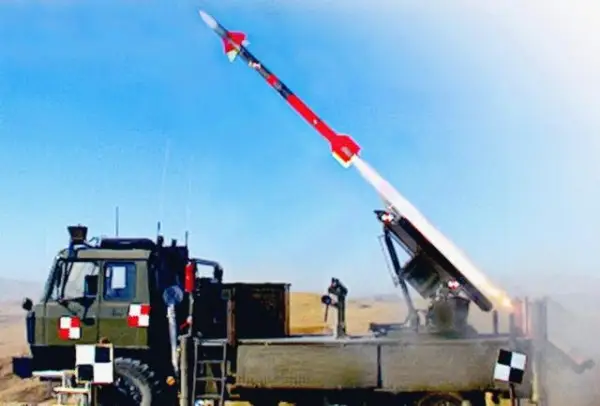
Experienced PU Spyder air defense system
The universal launcher on the chassis of a three-axle off-road truck is made according to a modular principle. Four Python-5 missiles are placed in transport and launch containers located on a turntable. Guidance in the horizontal and vertical planes occurs using hydraulic drives. When the launcher moves, the TPKs are transferred to a horizontal position. SPU calculation – 3 people.
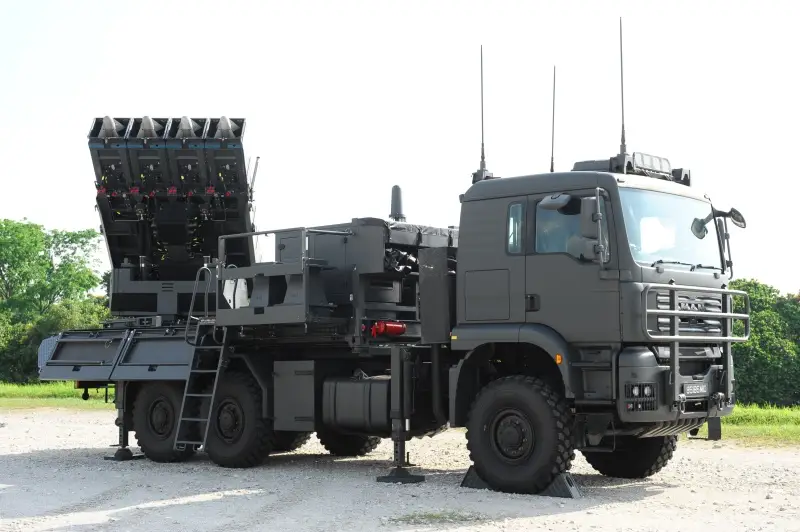
Self-propelled launcher of the serial Spyder-SR air defense system
Missiles can be launched in target acquisition mode with a homing head before launch (when the missiles are in the TPK) and after launch. In the latter case, before the target is captured by the homing head, the missile is controlled by an inertial system according to the primary target designation data transmitted to the missile. The rate of fire is two seconds.
The maximum firing range of Python-5 missiles with an additional upper stage when launched from a ground-based launcher reaches 15 km. Reach in height – 9 km.
The anti-aircraft battery includes a mobile command post, three self-propelled launchers and transport-loading vehicles.
To increase the survivability of the missile system, the self-propelled launcher can be located at a distance from the battery command post. Information exchange occurs via cable, fiber-optic line or radio channel. When operating autonomously, the SPU crew uses the Toplite electro-optical detection system.
The command post is equipped with a three-dimensional radar Elta EL/M-2106NG, capable of detecting and tracking up to 60 targets at a range of up to 80 km.
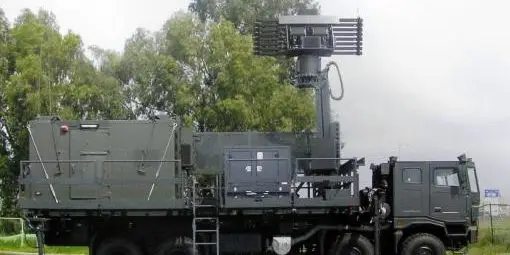
A mobile command post, which provides the ability to conduct combat operations in a single information space of a layered air defense system, receives target designation from external sources.

According to unconfirmed reports, the first case of combat use of the Spyder-SR air defense system
took place in August 2008 during the Georgian-South Ossetian conflict.
A number of sources claim that on August 9, 2008, Georgian air defense shot down a Russian Su-24M front-line bomber from the 929th State Flight Test Center. The plane was hit by a missile defense system during the second approach to the target; before that, two missiles were launched at it to no avail. The hit by the missile defense caused a fire, and the crew ejected, but the Su-24M began to fall apart in the air, and its debris damaged the parachute canopy of navigator Colonel Igor Rzhavitin, as a result of which he died.
At the same time, other sources say that the Russian front-line bomber was hit by a Ukrainian-supplied Buk-M1 air defense system. We may find out what actually happened after the documents of the Russian and Georgian Defense Ministry are declassified.
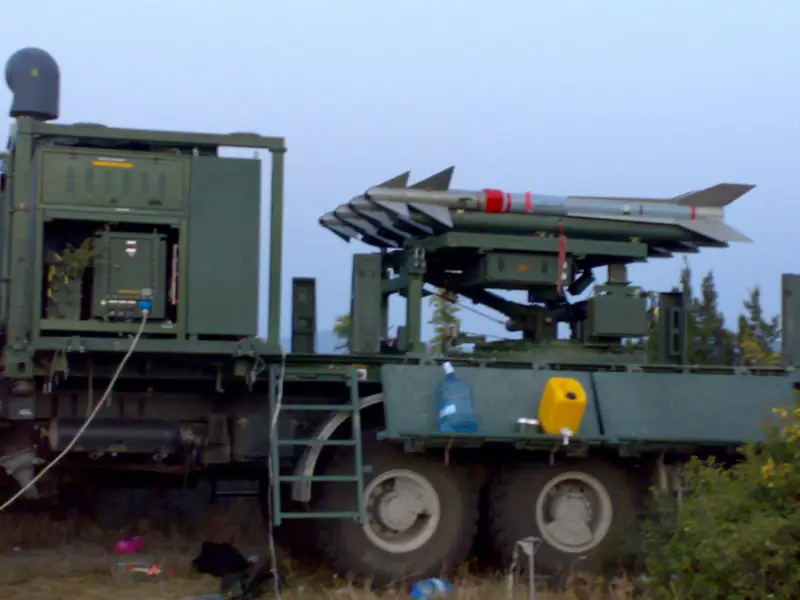
There is a photo on the Internet of an allegedly Georgian launcher, which is very similar to the experimental Israeli prototypes used to test the Spyder-SR air defense system.
Later, the developer announced the release of a more advanced version of the Spyder-MR (Medium Range), which, in addition to the Python-5 short-range missile, uses longer-range Derby aircraft missiles with an active radar guidance system.
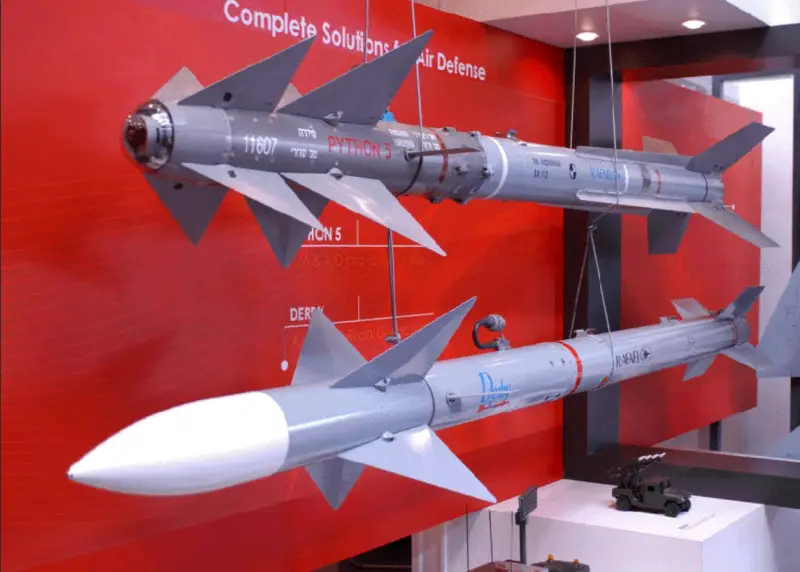
Python-5 and Derby rockets
More details about the Derby missile will be discussed in a publication dedicated to radar-guided air defense systems.
It is known that the buyers of Israeli air defense systems of the Spyder family are Georgia, Singapore, the Czech Republic and the Philippines.
Anti-aircraft missile system Iris-T SLS/SLM
One of the most advanced anti-aircraft missile systems, which uses the modified Iris-T close-in air combat missile, is the German Iris-T SLS/SLM.
The Iris-T air-to-air missile was created to replace the widely used AIM-9 Sidewinder family of missiles. To create and market the rocket, a consortium was created, which included six European countries: Germany, Greece, Norway, Italy, Spain and Sweden. The main contractor in the program was the German concern Diehl BGT Defense.
Other major companies participating in the program include MBDA, Hellenic Aerospace, Nammo Raufoss, Internacional de Composites and Saab Bofors Dynamics. Successful testing of the Iris-T took place in 2002, and a serial production contract worth more than 1 billion euros with Diehl BGT Defense was signed in 2004.
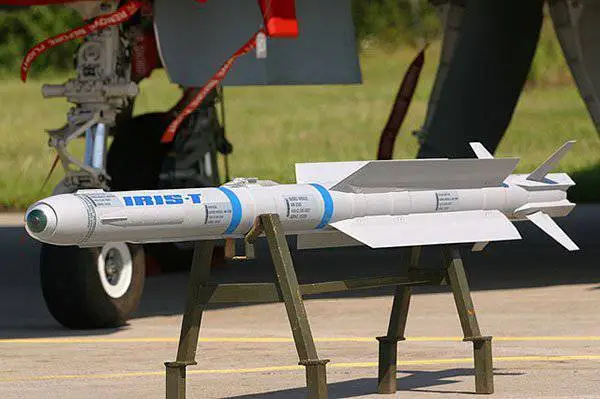
Iris-T rocket
The Iris-T rocket has a length of 2,94 m, a diameter of 127 mm, and a weight without an additional accelerator - 89 kg. It is possible to capture a target before launch, as well as after launch already in flight. Maximum speed – up to 3 M. Firing range – up to 25 km.
The Iris-T air-to-air missile can be part of the armament of the following aircraft: Typhoon, Tornado, Gripen, F-16, F-18. In addition to the German Air Force, these missiles were purchased by Austria, South Africa and Saudi Arabia.
The development of the air defense system, which used the Iris-T missile launcher, began in 2007, and two years later a prototype of the complex was handed over for testing.
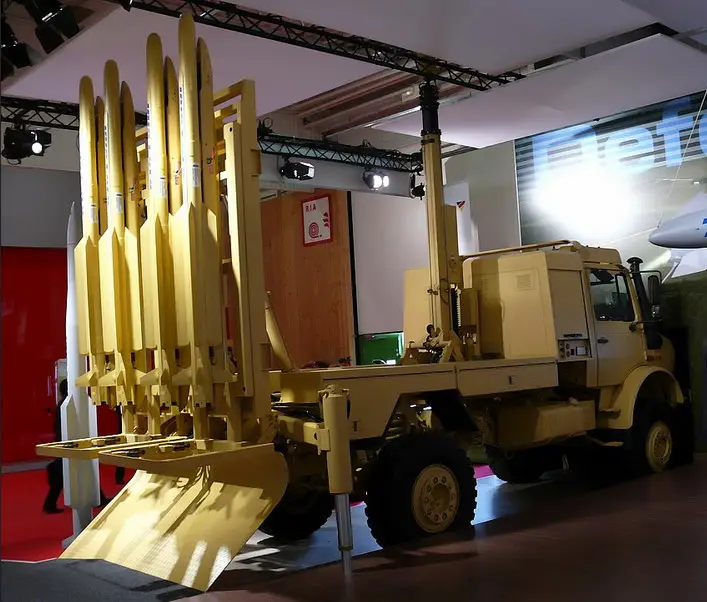
Model of the Iris-T self-propelled launcher at the exhibition in Le Bourget 2007
The Iris-T SL anti-aircraft missile has a jettisonable ogive-type nose fairing and a more powerful engine with a larger diameter. The modified surface-to-air missiles are equipped with a combined system that uses inertial control equipment, a radio command course correction system, and a thermal homing head. The missiles are launched vertically from a mobile launcher and can be used in a “fire and forget” mode.
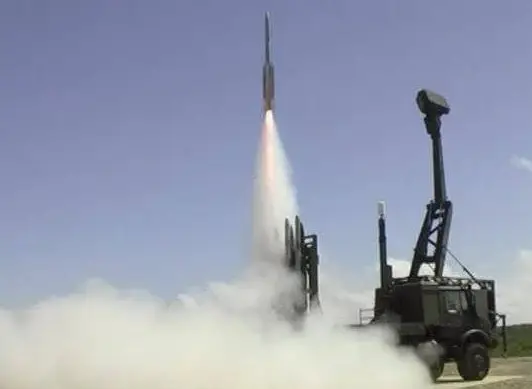
The serial wheeled SPU has eight transport and launch containers. After launch, the anti-aircraft missile is launched into the target area by inertial or radio command systems, after which the noise-proof, highly sensitive IR seeker is activated. Fireable heat traps are usually used against heat-seeking missiles.
However, an attack on a target flying at high or medium altitude outside the range of MANPADS, in the absence of irradiation by the illumination and guidance station, may very likely be unexpected for the pilot, and countermeasures will not be used, which increases the likelihood of being hit when firing at combat aircraft with Iris anti-aircraft missiles. TSL.
The launcher is capable of operating autonomously and, thanks to the possibility of remote control, does not require the presence of a crew. When communicating via a radio channel, it can be located at a distance of up to 20 km from the command module, which makes it safe for personnel to deploy it near the line of combat contact in order to directly cover troops. Deploying the launcher from traveling to combat position takes 10 minutes. The maximum reach of the Iris-T SLM air defense system is 40 km in range and 20 km in altitude. The minimum launch range is about 1 km.
The complex includes: a command post, a multifunctional radar and launchers with anti-aircraft missiles. All elements of the air defense system are placed on mobile chassis. The customer, depending on his preferences, has the opportunity to choose the type of base vehicle, model of radar and control center, made according to NATO standards.
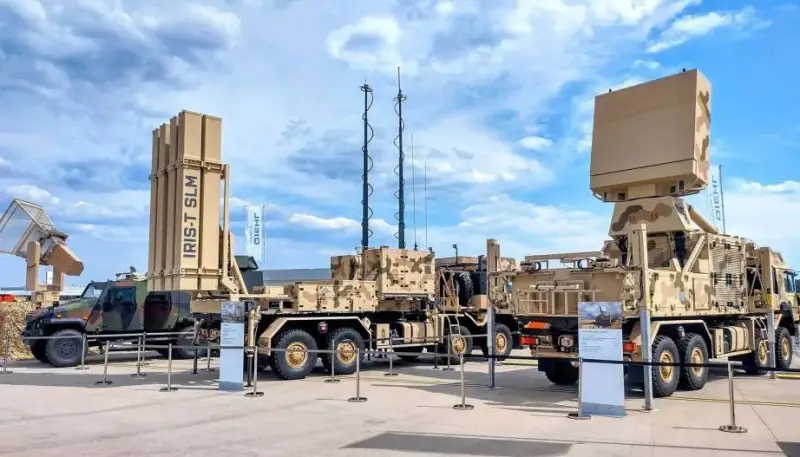
In 2014, during testing of the improved Iris-T SLM (Surface Launched Medium Range - medium-range for launching from the surface), a multifunctional radar made by Australian manufacturer CEA Technologies CEAFAR was used with a range of up to 240 km. The control was carried out by the Oerlikon Skymaster system. The air defense system elements were interfaced through the BMD-Flex communication system of the Danish company Terma A/S.
The first buyer of the Iris-T SLS air defense system in a simplified version with short-range missiles was Sweden. A contract worth $41,9 million for 8 air defense systems was signed in 2007, and delivery took place in 2018.
In 2021, Egypt acquired seven Iris-T SLM air defense systems.
According to available data, the first Iris-T SLM air defense system was transferred to Ukraine in the fall of 2022. According to information published in German media, as of the second half of 2023, Ukraine received three air defense systems with Iris-T missiles. In June 2023, the TRML-4D radar of the Ukrainian Iris-T SLM air defense system was successfully attacked by the Russian Lancet loitering munition.
VL MICA anti-aircraft missile system
In February 2000, at the Asian Aerospace exhibition in Singapore, the European concern MBDA (a joint venture of EADS, BAE Systems and Finmeccanica) presented the VL MICA air defense system, which used MICA aircraft missiles designed to destroy highly maneuverable targets at short and medium ranges.
The MICA-IR air-to-air missile, adopted by the French Air Force in 1998, was created to replace the Matra Super 530D/F missiles.
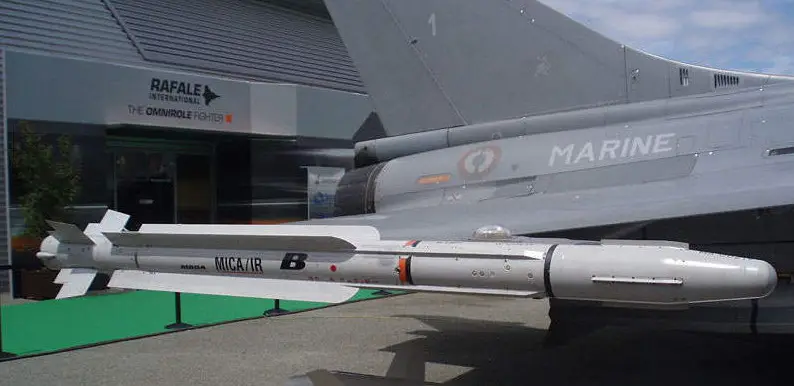
MICA-IR air-to-air missile
The missile can be equipped with a thermal imaging or radar seeker. But, according to published information, the VL MICA air defense system uses missiles with an IR seeker.
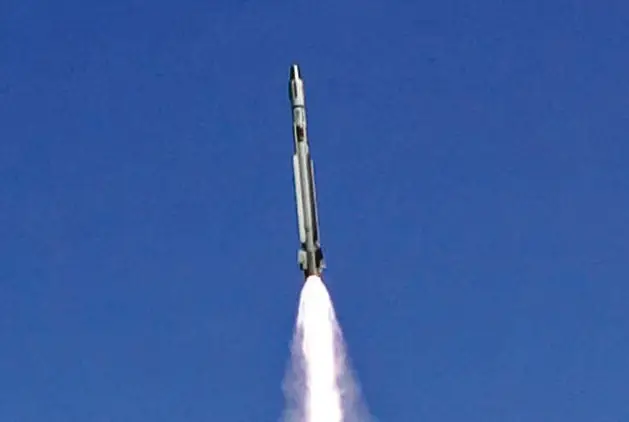
The bispectral seeker of the MICA-IR missile, operating in the range of 3–5 and 8–12 microns, contains a matrix of sensitive elements installed in the focal plane, an electronic digital signal processing unit and a built-in closed-type cryogenic cooling system for the matrix. High resolution and complex algorithms allow the seeker to effectively track targets at long distances and filter out heat traps.
During the initial phase of the flight, the rocket is controlled by an inertial system. Radio command guidance is used to control the missile in the middle section of the trajectory, until the homing head captures the target. The use of the “fire and forget” principle makes it possible to effectively counteract the saturation of the target’s air defense system during massive attacks by enemy air attack weapons. The rate of fire is two seconds.
The missile launcher is launched from a TPK, which has a curb weight of about 480 kg. A vertically launched anti-aircraft missile weighs 112 kg. Length – 3,1 m, diameter – 160 mm, wingspan – 480 mm. The mass of the warhead is 12 kg. The maximum firing range is up to 20 km. Height reach – 9 km.
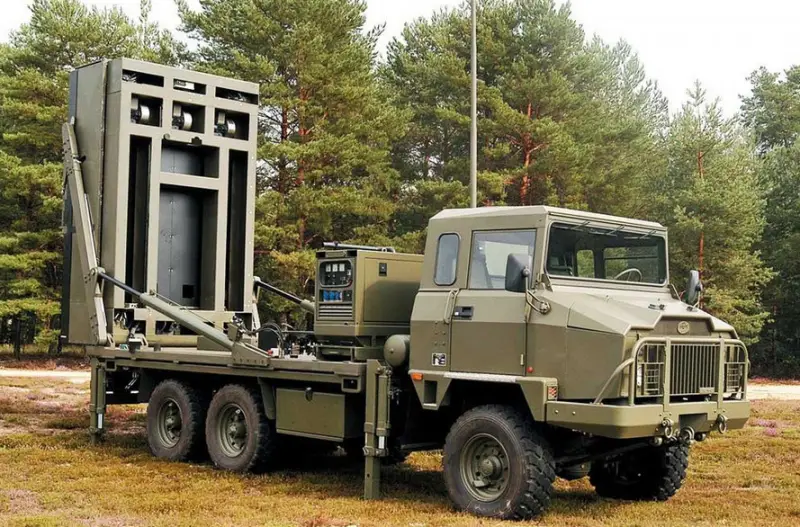
The VL MICA land air defense system includes four self-propelled launchers on a three-axle wheeled chassis with a payload of 5 tons (4 missiles on the SPU), a mobile command post and a detection radar.
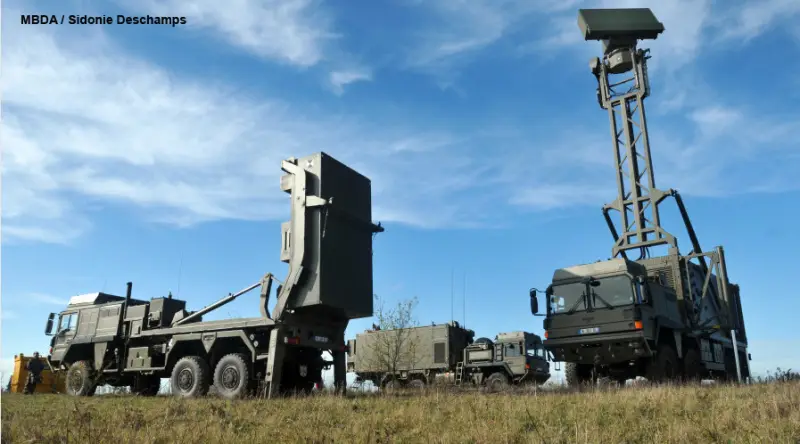
In July 2009, at the French missile range Biscarrosse, a MICA-IR missile launched from a ground launcher intercepted a low-flying target at a range of 15 km and an altitude of 10 m above the sea surface. After a series of 15 successful test launches, the French Ministry of Defense awarded MBDA a contract for the supply of VL MICA air defense systems for all branches of the military.
The complex offered by the MBDA concern appeared on the market before the German Iris-T SLS/SLM. Contracts for the purchase of VL MICA air defense systems were concluded by Botswana, Saudi Arabia, Oman and the UAE, Thailand and Morocco.
Продолжение следует ...
Information